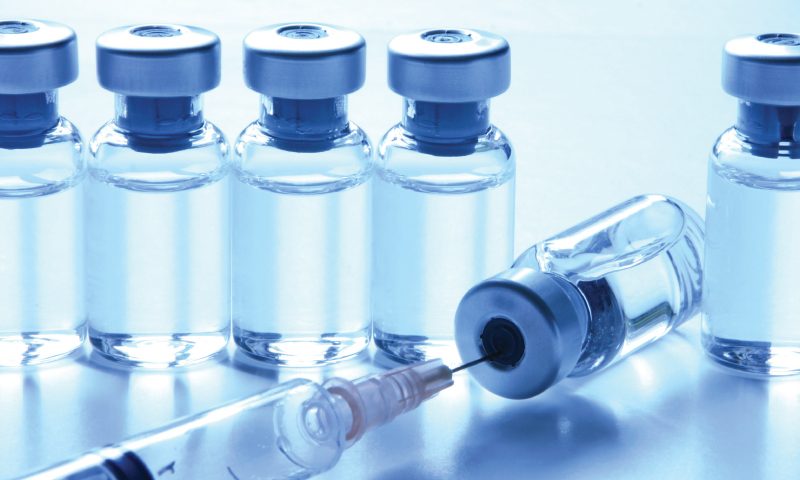Biologics have experienced steady double-digit growth over the last 15 years and now comprise slightly more than a quarter of all New Molecular Entity (NME) FDA approvals. Similarly, Evaluate Pharma’s 2017 report on orphan drugs projects that by 2020, six of the 10 best-selling global drug therapies will be biologic sterile injectable drugs. Precision medicine is also on the rise, with the FDA approving a record number of precision drugs in 2017. The rise in these targeted therapies means big changes for drug development and manufacturing companies.
In contrast to small-molecule development, biologics have experienced steady, double-digit growth over the last 15 years, and they now comprise slightly more than a quarter of all New Molecular Entity (NME) FDA approvals. Similarly, in 2017 the FDA announced its intention to speed up reviews of drugs that are requesting orphan drug designation, as well as clear out a backlog of pending requests. EvaluatePharma’s 2017 report on orphan drugs projects that by 2020, six of the 10 best-selling global drug therapies will be biologic sterile injectable drugs.
Likewise, precision medicine is also on the rise. In contrast to medicines that take a one-size-fits-all approach, precision medicine attempts to identify patients who will likely respond to targeted treatment regimens based on their genetic and phenotypic profiles. These targeted therapies are particularly promising for treating some of the more complicated disease areas such as oncology or immunology. In 2017, the FDA approved a record number of precision drugs: 16 new drugs, or one of every four drugs approved by the agency that year. Many see this as an indication that the agency is committed to advancing the field. Ten years ago, in contrast, such drugs made up less than 10% of new drug approvals.
All of these innovative therapies target relatively small numbers of patients. Smaller demand for an individual therapy, of course, means that sterile injectable manufacturing capabilities have to change to accommodate the smaller batch sizes and to be more flexible. And that means that many pharma companies now need to revamp their manufacturing strategies and work with a contract development and manufacturing organization (CDMO) that can handle their varied needs.
“We’re seeing more requests for [manufacture of] products that have a very small but important market,” says Tony Pidgeon, at Patheon, part of Thermo Fisher Scientific, a leading CDMO. “The industry historically has focused on large sterile injectable fill/finish equipment that could produce high-volume drug products economically. Many CDMOs have not been ready to do those smaller production volumes. The equipment is too big to produce the smaller batch sizes economically and the material losses on that equipment would be too much.”
Does the CDMO have the right equipment to handle small-volume batches?
Most traditional drug manufacturing involved the use of large size stainless steel equipment that was often fixed in place. That equipment is not suitable for producing smaller volumes of drugs. It’s possible to build stainless equipment that is much smaller, but that is costly and takes a lot of time, says Pidgeon.
A good alternative is a disposable manufacturing system. With such a system, he says, “the vessel is replaced by essentially a ‘bag in a box’ of the product. When you are finished using it, you just throw it away. There’s no cleaning, cleaning verification, or risk of cross-contamination.
Can your CDMO also handle large batches?
Some companies are set up for small batches with disposable equipment, but they don’t also have the larger equipment.
“If a client starts small, and then they get additional indications approved and they need to scale to larger equipment, that small player most likely can’t meet their needs,” says Pidgeon. “Conversely there are big players out there who don’t have the small equipment to do small batches.”
Can the CDMO handle product needs at all stages, from Phase I clinical trial through commercial manufacture?
Disposable systems are very scalable, says Pidgeon. “The equipment has been designed so that it can take you from the earliest clinical trial phase all the way through to commercial manufacture. Phase I-III supplies, as well as the commercial batch, can all be made in the same equipment. That makes tech transfer simple, because you’re not having to go through a scale-up tech transfer to a completely different fitting line, often in a completely different facility.”
Can your CDMO’s system minimize product loss?
Many of the new biologics, orphan drugs and precision medicines are very expensive to produce, and are available only in small amounts, making minimal product loss of paramount importance
The right type of equipment can mitigate product loss. A CDMO that is set up for small-volume manufacturing will be able to make use of fewer pumps to fill vials, reduces the amount of tubing and hold up volumes.

